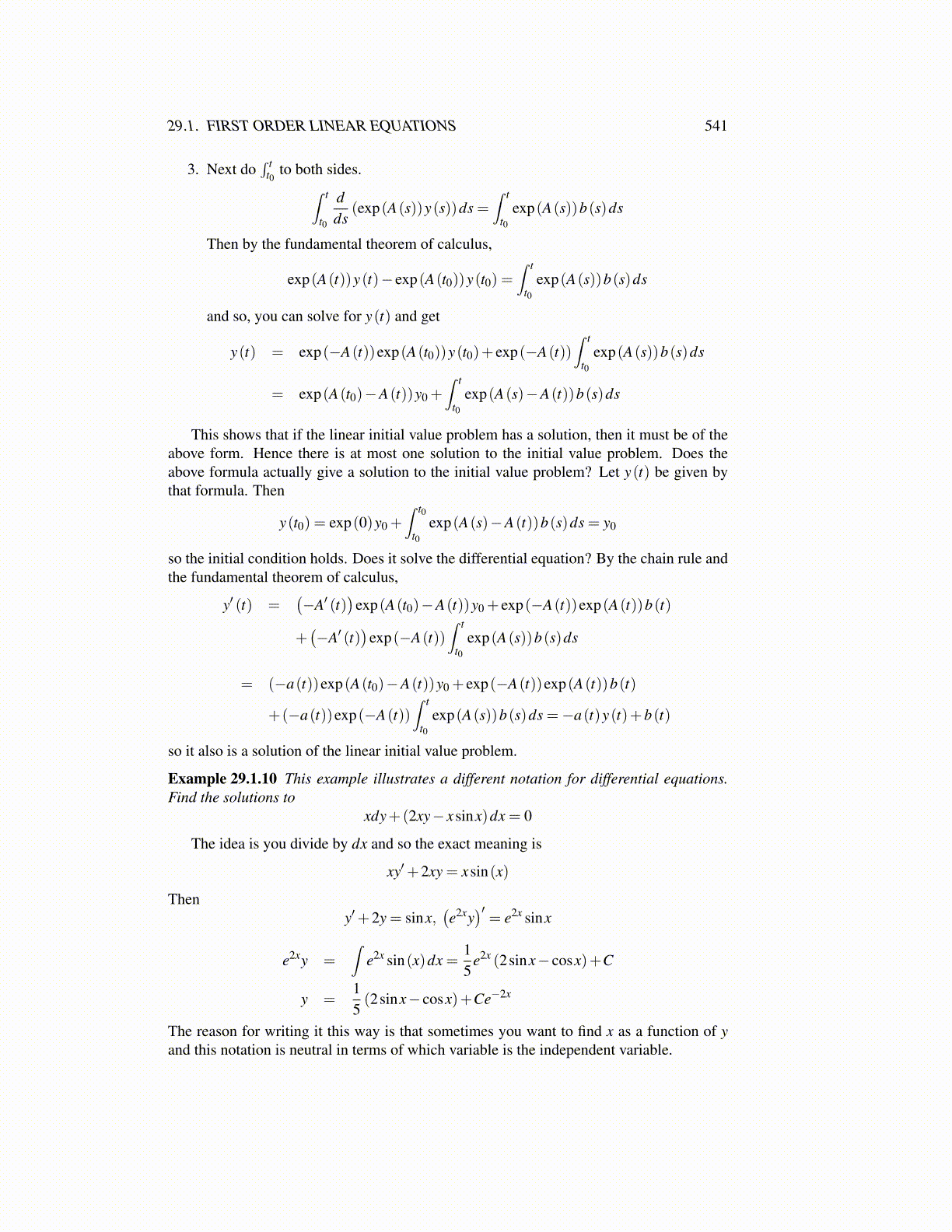
29.1. FIRST ORDER LINEAR EQUATIONS 541
3. Next do∫ t
t0 to both sides.∫ t
t0
dds
(exp(A(s))y(s))ds =∫ t
t0exp(A(s))b(s)ds
Then by the fundamental theorem of calculus,
exp(A(t))y(t)− exp(A(t0))y(t0) =∫ t
t0exp(A(s))b(s)ds
and so, you can solve for y(t) and get
y(t) = exp(−A(t))exp(A(t0))y(t0)+ exp(−A(t))∫ t
t0exp(A(s))b(s)ds
= exp(A(t0)−A(t))y0 +∫ t
t0exp(A(s)−A(t))b(s)ds
This shows that if the linear initial value problem has a solution, then it must be of theabove form. Hence there is at most one solution to the initial value problem. Does theabove formula actually give a solution to the initial value problem? Let y(t) be given bythat formula. Then
y(t0) = exp(0)y0 +∫ t0
t0exp(A(s)−A(t))b(s)ds = y0
so the initial condition holds. Does it solve the differential equation? By the chain rule andthe fundamental theorem of calculus,
y′ (t) =(−A′ (t)
)exp(A(t0)−A(t))y0 + exp(−A(t))exp(A(t))b(t)
+(−A′ (t)
)exp(−A(t))
∫ t
t0exp(A(s))b(s)ds
= (−a(t))exp(A(t0)−A(t))y0 + exp(−A(t))exp(A(t))b(t)
+(−a(t))exp(−A(t))∫ t
t0exp(A(s))b(s)ds =−a(t)y(t)+b(t)
so it also is a solution of the linear initial value problem.
Example 29.1.10 This example illustrates a different notation for differential equations.Find the solutions to
xdy+(2xy− xsinx)dx = 0
The idea is you divide by dx and so the exact meaning is
xy′+2xy = xsin(x)
Theny′+2y = sinx,
(e2xy
)′= e2x sinx
e2xy =∫
e2x sin(x)dx =15
e2x (2sinx− cosx)+C
y =15(2sinx− cosx)+Ce−2x
The reason for writing it this way is that sometimes you want to find x as a function of yand this notation is neutral in terms of which variable is the independent variable.